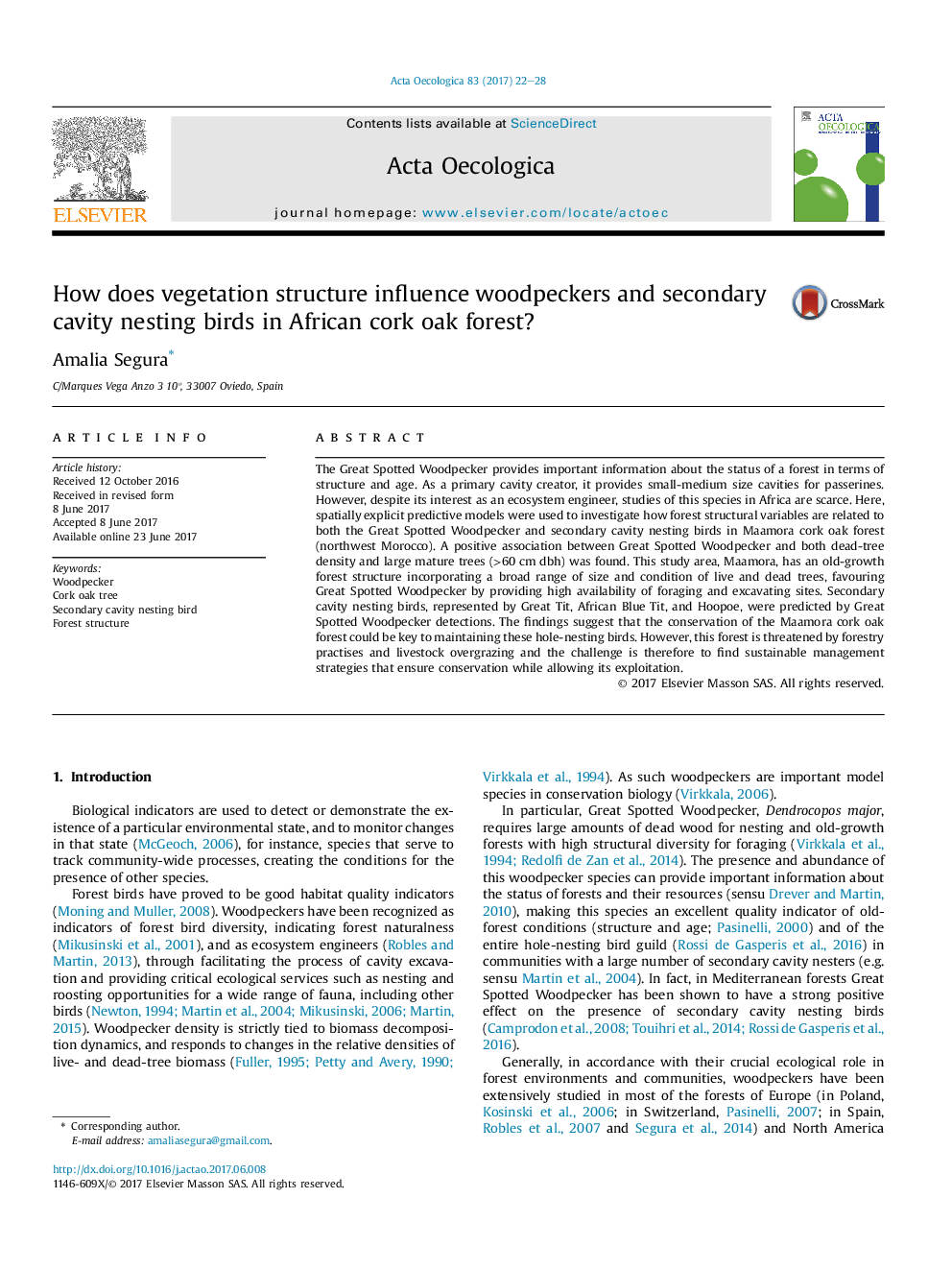| کد مقاله | کد نشریه | سال انتشار | مقاله انگلیسی | نسخه تمام متن |
|---|---|---|---|---|
| 5742461 | 1617689 | 2017 | 7 صفحه PDF | دانلود رایگان |
- Great Spotted Woodpecker in Maamora cork oak forest provides important information of forest structure and age.
- Large-diameter trees and high dead-tree density favours Great Spotted Woodpecker and cavity nesting birds.
- Secondary cavity nesting birds, beneficiate from high availability of excavating sites provided by Great Spotted Woodpecker.
- Great Spotted Woodpecker and secondary cavity nesting birds, required to develop evidence-based conservation strategies in Maamora.
The Great Spotted Woodpecker provides important information about the status of a forest in terms of structure and age. As a primary cavity creator, it provides small-medium size cavities for passerines. However, despite its interest as an ecosystem engineer, studies of this species in Africa are scarce. Here, spatially explicit predictive models were used to investigate how forest structural variables are related to both the Great Spotted Woodpecker and secondary cavity nesting birds in Maamora cork oak forest (northwest Morocco). A positive association between Great Spotted Woodpecker and both dead-tree density and large mature trees (>60 cm dbh) was found. This study area, Maamora, has an old-growth forest structure incorporating a broad range of size and condition of live and dead trees, favouring Great Spotted Woodpecker by providing high availability of foraging and excavating sites. Secondary cavity nesting birds, represented by Great Tit, African Blue Tit, and Hoopoe, were predicted by Great Spotted Woodpecker detections. The findings suggest that the conservation of the Maamora cork oak forest could be key to maintaining these hole-nesting birds. However, this forest is threatened by forestry practises and livestock overgrazing and the challenge is therefore to find sustainable management strategies that ensure conservation while allowing its exploitation.
Journal: Acta Oecologica - Volume 83, August 2017, Pages 22-28
